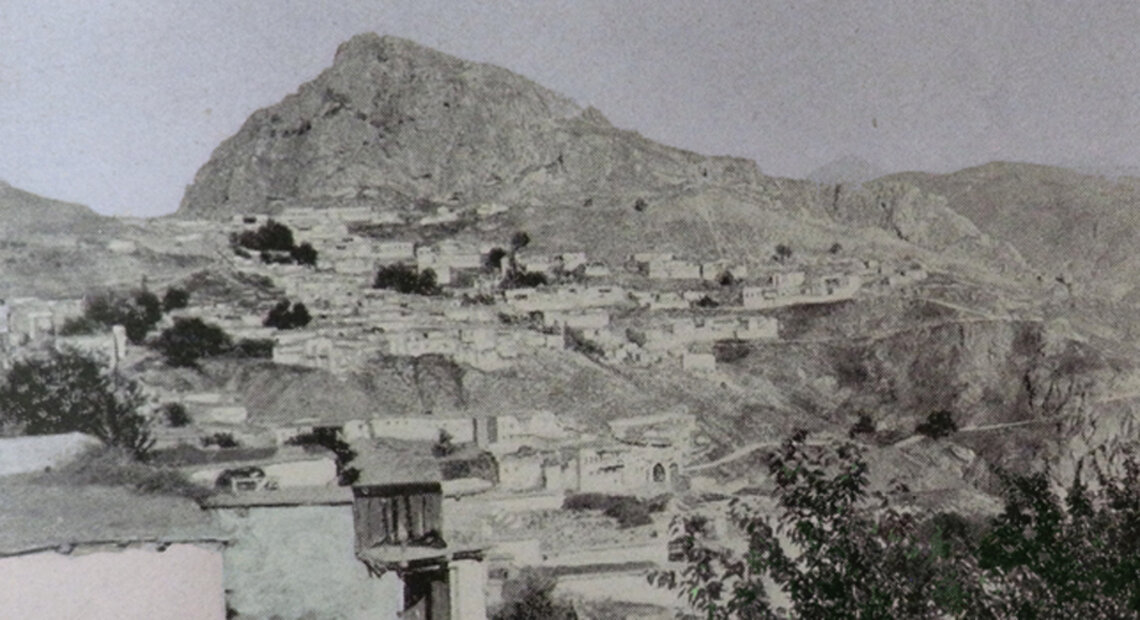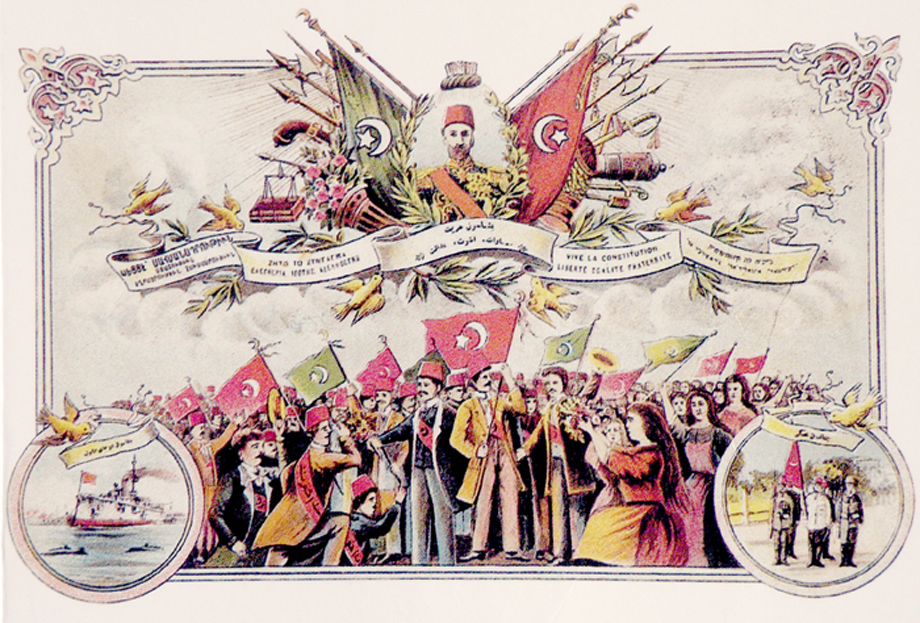Palu (the town)
The first astonishing echo of the news of the re-establishment of the Ottoman constitution in Palu town is the noise of the firing of cannon. The old cannon set up in the castle in Palu was only ever fired on special occasions. The people of the town, totally surprised by the cannnonade, immediately gathers in front of the kaymakam’s building, from which the kaymakam himself emerges and announces the proclamation of the constitution. As a result, the Armenian Apostolic church bell begins to toll, the Armenians shut up their shops, congregate in the church and offer up prayers of rejoicing for the ‘Freedom’ that has been proclaimed. [1]
The years of the constitution open a new page not only for the people of Palu town, but also in the lives of the people in the Armenian villages. Education gains a new impetus, especially when emigrants from Palu found new schools, while others are repaired and improved with the money they have collected. Political life also encounters a period of greater activity; new Dashnak and Hnchak groups are formed. Other people from Palu return from abroad and build new houses in the town or their ancestral villages. It should be said that it is in this period that the number of two-storey houses increases in the district of Palu and windows are sealed with glass. [2]
The general attitude adopted by the Armenians in the district towards conscription is also noteworthy. Equality before the law means that Armenians also have to serve in the Ottoman army. This right, however, is generally viewed by the Armenian population of the district with great reservation. It is one of the main reasons for the new wave of emigration to the United States of America by the young people of the town and villages. [3]
Havav
The news of the proclamation of the constitution arrives in Havav through people from the village who had gone to the town and retuned. They describe the enthusiasm and joyful atmosphere in the town. On the very same day the villagers gather together and go to Palu en masse to see and establish all this in person. In this first week individuals from Havav are found who go to Palu every day to join the daily mass demonstrations that take place in the town.
It is in these days too, that a fedayi, Avedo (Avedis Kazandjian) from Charsandjak, comes to Palu, his hair dyed with henna and with a bundle in his hand. A large number of Havav villagers assemble on the flat roof of one of the houses and all listen to the fedayi’s stories with great attention. This is followed by the the entry of other Armenian fedayis or political activists into Havav.
It is obvious that times have changed.
In the next few months the sale of weapons gains impetus within this area, especially as the Armenians now openly carry them. Neighbouring Turks or Kurds bring Martini type rifles to Havav and sell them in the market there. The carrying of weapons by Armenians in Havav is so widespread that when bringing a bride from nearby Khoshmat village the men go armed with Martini rifles. [4] It is also only during this period that the Armenian political parties really begin work in Havav. Until these times there were no operational groups or bodies.
Extraordinary activity begins in Havav in this post-constitution period. Individuals from Havav return from the United States to their ancestral homes and new houses, vineyards and gardens are built.
Nerkhi
This part concerning the village of Nerkhi is based on Boghos Melikian’s memoirs. At the time of the proclamation of the constitution he was a student, attending the school in the neighbouring village of Khoshmat. Boghosian points out that, when the news of this historic change reaches them, the school organises a celebration. The students, holding coloured paper flags in their hands and carrying various different placards march for about half an hour to the Chayri Mezre plain. On the way the students sing ‘yaşasın hürriyet, osmanlıyız kardeşliktir’ (Long live liberty, we are Ottomans, its brotherhood) as well as, in Armenian, ‘Azadn Asdvadz’ (Free God, by Mikayel Nalbandian).
The students from Havav village and Palu town join them there, making a group totalling about 500 young people. Tongues are loosened and the students boldly begin to sing the kind of songs that only a few weeks before they would have been frightened even of whispering:
‘Our brave men are holding all four sides
Now they have exhausted the hopes of the dog of a Sultan…’
They also sing ‘Dalvorig’, ‘Azadn Asdvadz’, ‘Gargoud deghats’ and ‘Heravor yergir’. [5]
Sakrat
During this time Armenian life in Sakrat village is characterised by the trial opened against the influential Kurdish bey Ibrahim. It was opened by the Hnchag activist Bedros Varjabedian (Bedre). It accuses Ibrahim bey of appropriating Varjabedian’s ancestral lands around Sakrat village and demands their return. Bedre shows the court in Palu town all the papers and deeds relating to the land in his grandfather’s name and finally wins the case. [6]
* * * *
In 1908 an armed clash between a number of influential beys in Palu district is the reason for the local authorities to intervene and arrest Tefig bey, as well as the brothers Ibrahim and Rushdi beys of Sakrat. This swift intervention is, for many, a demonstration of the new political atmosphere resulting from the reinstatement of the terms of the constitution. But the beys’ imprisonment only lasts for a few years and they are freed from Urfa jail in 1912. They return to Palu and immediately rebuild their area of influence. The interesting thing is that both beys are now members of the Ittihad party and that they build a party building in Sakrat. [7] Ibrahim Bey is also elected to the Diyarbekir provincial assembly. [8]
- [1] Arsen Gidur (editor) History of the Social Democrat Hnchakian Party (in Armenian), 1887-1963, Vol 2, published by Shirag, Beirut, 1963, page 422-423.
- [2] Ibid., page 424.
- [3] Ibid., page 425.
- [4] Dikran S. Papazian, History of Havav village of Palu (in Armenian), published by Mshag, Beirut, 1960, page 68-69, 71.
- [5] Boghos Melikian, With native breath (in Armenian), published by Hamazkayin, Beirut, 1969, page 257-258
- [6] A. Gidur, op. cit., page 424.
- [7] Ibid., page 428-429.
- [8] Harutiun Tsakhsurian, History of the valley of Palu from ancient times unil our days, published by Donigian, 1974, Beirut, page 418.

